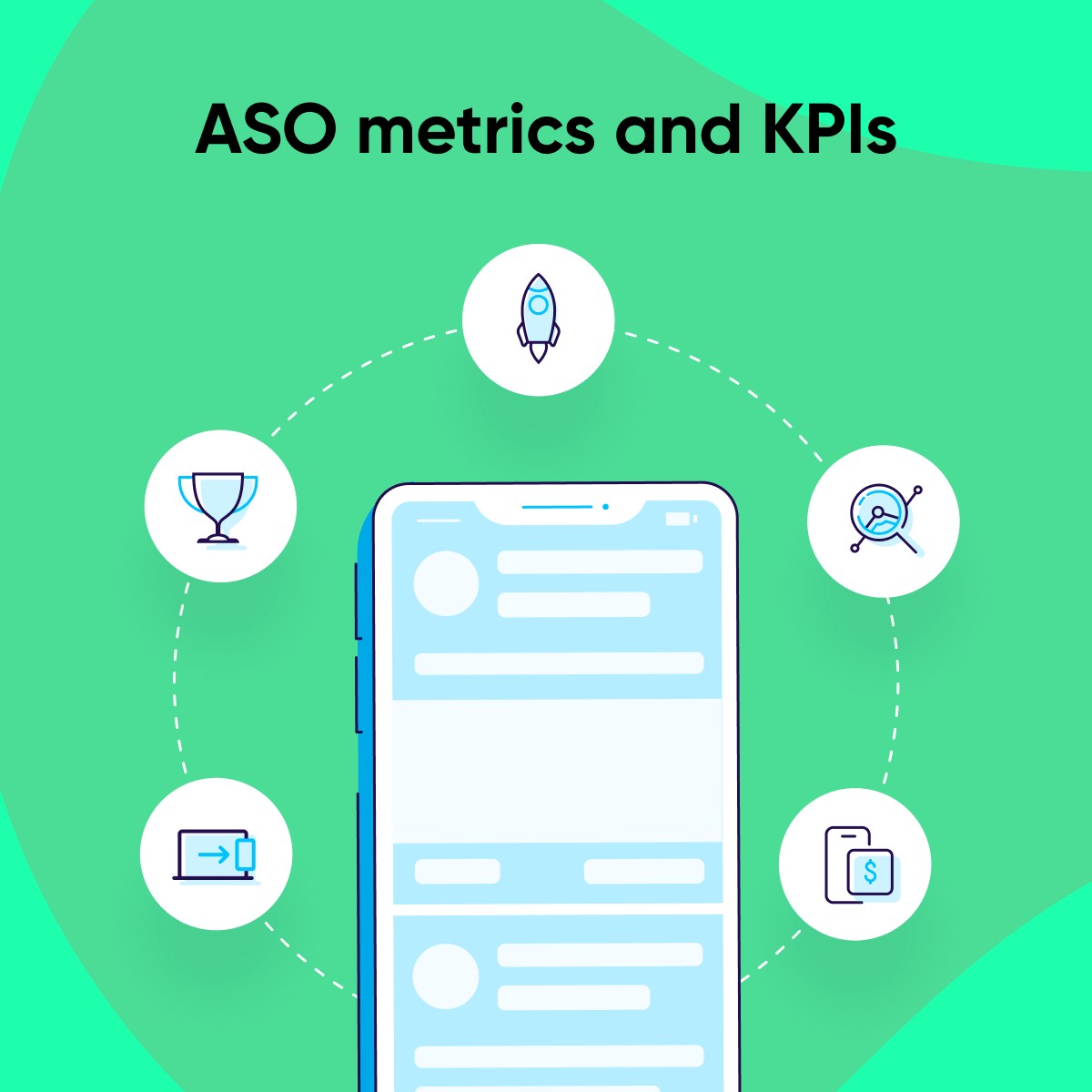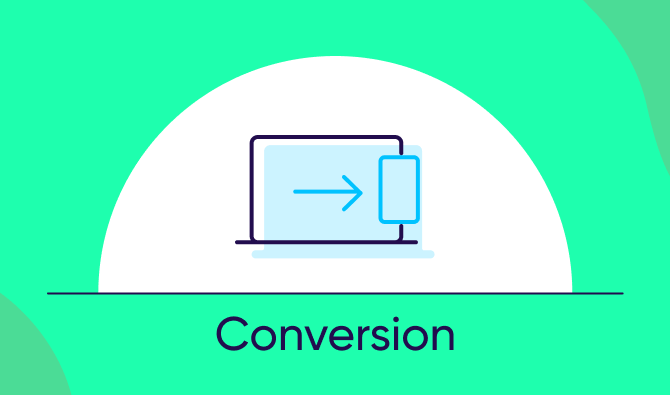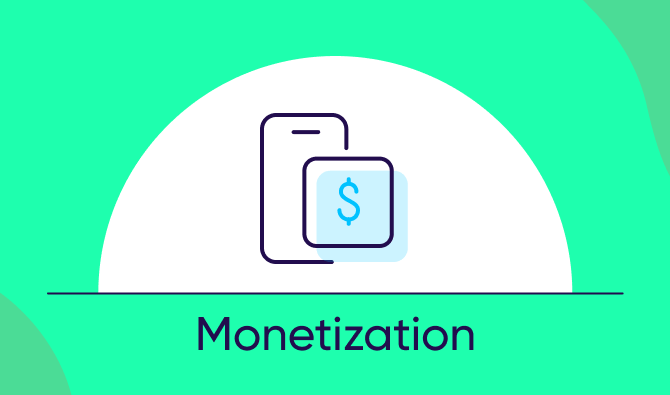
ASO metrics and KPIs: Measuring your app’s success

Your mobile app has been on the App Store for a few months, and you are now getting hundreds of downloads every month. You’re off to a good start. There is, however, a lot more you can do for people to discover and download your app.
The number of app downloads is just one metric to measure. The other metrics you can track are your app’s visibility, conversion rate, user growth, user feedback, and monetization.
Like any product, your mobile app or game goes through a sales funnel, from awareness, interest, and consideration, to conversion and retention. Setting targets based on key performance indicators (KPIs) can help capture users at each funnel phase.
What are the leading ASO Key Performance Indicators?
App Store Optimization (ASO) is about improving your app’s visibility so more people can discover it. It also involves increasing your app’s conversion rate to get more users to install it.
But how do you know if your ASO strategy is working?
You can use various metrics to determine if your ASO is performing well. It is essential to track relevant KPIs as you cannot optimize what you do not measure.
There are dozens of ASO KPIs, and these can be categorized into five groups:
- Visibility
- Conversion
- Growth
- User feedback
- Monetization
#1: Visibility

Before people can install your app, they need to find it first. You want your target users to discover your app in the Apple store charts or when they search for specific keywords. The more visible your app is, the greater the chance of people downloading it.
The ASO KPIs you can measure are:
- Keyword rankings. Your app’s position on the search results page for your target keywords and keyword combinations. The more keywords your app ranks for, the higher its visibility. One thing to remember is to target keywords with enough search volume.
- Top charts rankings. The Apple Store has three main top charts: free, paid, and gross. Be sure to track your app’s position in these charts.
- Category rankings. This is where your app ranks in its category, e.g., productivity or education. It shows how relevant your app is compared to competitors.
- Similar and related apps. Many users discover new apps through these widgets on the Apple Store. You want to know how many apps — and which ones — link to yours.
- Featured. Getting featured on the App Store’s main page can drive traffic to your product page, so monitor if and when your app is showcased on the App Store.
Track these visibility KPIs regularly, compare them within and across countries, benchmark your app’s rankings against your competitors, and lastly — implement ASO tactics to improve your rankings.
#2: Conversion

After visibility, conversion is considered the second most important KPI. For some, it is the most critical ASO performance measure. Getting people to visit your product page is the first step. The next is to persuade them to install your app.
There are two factors influencing conversion:
- On-metadata. This includes the app name or title, description, icon, screenshots, featured image, and video previews. Your copy and creatives must be relevant, engaging, and compelling enough for people to install your app.
- Off-metadata. This involves the number of downloads, user ratings, and reviews. Call it herd behavior or the wisdom of crowds, these signal to people that your app is worth using.
There are two types of conversion KPIs to track:
- Click-through rate (CTR). Also known as Tap-through Rate (TTR), this is the percentage of users who see your app in rankings or search results and then click to view your product page.
- Conversion rate (CR). Also known as Install Rate (IR), this is the percentage of users visiting your product page who download and install your app.
#3: Growth

Absolute numbers for downloads and users are insufficient metrics. Are they growing or slowing down over time? Mobile growth is a critical indicator of success for your app.
There are two ways to measure mobile growth:
- Number and velocity of installs. The number of installs is the most basic KPI you can track inside the App Store’s developer console. Tracking this KPI and comparing the increase in installs for a specified period will show the velocity or speed of your growth. Is it slowing or increasing?
- Number of active users. The primary KPIs are Monthly Active Users (MAU) and Daily Active Users (DAU). The increase in the number of active users over time shows your app’s growth is sustainable.
Now, when you measure the number and growth of installs, keep in mind that you want to differentiate organic and non-organic installs. ASO enables you to drive organic installs, so you do not have to keep spending on marketing.
Paid marketing campaigns do help increase the number of installs directly or indirectly. They can drive traffic to your product page and increase branded searches, and also improve your app’s ranking in top charts and search results — increasing your visibility and discoverability.
You can measure your paid campaign’s impact on organic growth using these two KPIs:
- Organic uplift. Also called organic multiplier, this shows the boost in organic installs due to paid marketing campaigns. This is calculated by dividing organic installs by the number of paid installs.
- Effective cost per install (eCPI). The higher the organic uplift, the lower the effective cost per install of your user acquisition campaigns.
#4: User feedback

User feedback is crucial for two reasons: it is a ranking factor in the Apple Store’s algorithms for its top charts and search results, and it influences users to install an app. A high rating and plenty of positive user reviews are signs of a quality app worth downloading.
These are the KPIs you can track:
- Rating score. Ranging from 1 to 5 stars.
- Number and recency of ratings. The number of ratings matters. And so does how new they are. The latest ratings have more weight in the search and rankings algorithm. They inform people that these are ratings from very recent users.
- Number and quality of reviews. Many positive reviews, especially quality ones, can help your visibility and conversion rate. Long, specific, and useful reviews are best.
- Ratings to reviews ratio. People are more persuaded by written reviews than the number of ratings, so the closer this ratio is to 1:1, the better. Users who take the time to type their reviews are more engaged than those who click a star rating.
- User sentiment. You can track this metric based on data from past reviews, giving you an overall idea of what users think of and feel about your app.
These user feedback KPIs impact your visibility and conversion rate, affecting your mobile growth. You can optimize user feedback by encouraging users to give their input through pop-ups and notifications and by replying to user reviews.
#5: Monetization

You can monetize your app through users buying it, paying a monthly subscription, running in-app ads, or promoting in-app purchases.
Some of the KPIs you can use to know if your monetization strategy is successful are the following:
- Revenue. This is the total revenue generated from your app, ads, in-app purchases, fees, and subscriptions.
- Average revenue per user (ARPU). This one is essential and should always be higher than your user acquisition cost. You calculate ARPU by dividing your total revenue by your number of users.
- Lifetime value (LTV). You can earn money from the same user throughout their usage of your app.
ASO plays a role in successful app monetization by targeting those users willing to spend on the app. Tracking these monetization KPIs can inform what type of users to target, which traffic source they come from, and which factors influence them to convert.
ASO vanity metrics
Vanity metrics are irrelevant or not valuable from a business perspective. While not entirely useless, they must not be solely relied on. Two examples of ASO vanity metrics and the KPIs you can focus on instead are:
- Cost per install. This is useful for measuring individual campaign performance.
A better KPI is customer acquisition cost, which includes the cost per install and conversion of active users. You can then compare this with ARPU and LTV to assess the sustainability of your app.
- Number of downloads. The number of installs is just the first part. You can have a lot of downloads but low usage and retention. Instead, focus on DAU and MAU. These two metrics are better indicators of success, because they allow you to gauge your app’s stickiness, user engagement, and user experience.
Key takeaways
- The main categories of ASO KPIs are visibility, conversion, growth, user feedback, and monetization.
- No single metric can measure success. Each is important for a specific stage and part of your overall ASO strategy.
- Do not rely on vanity metrics and focus on KPIs that help you achieve your business objectives.




